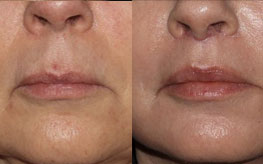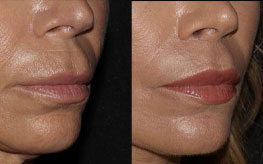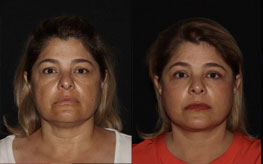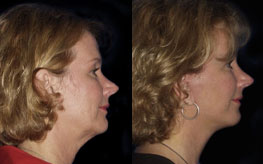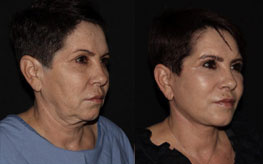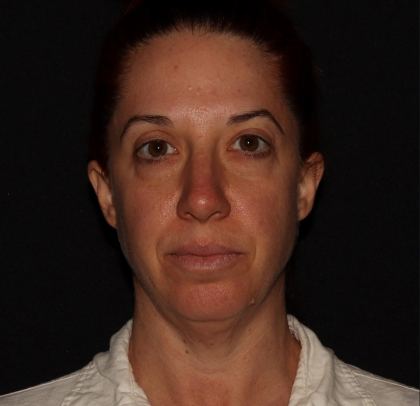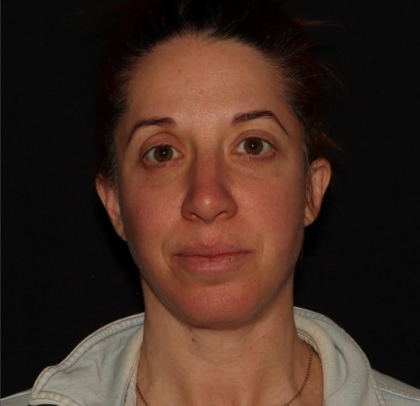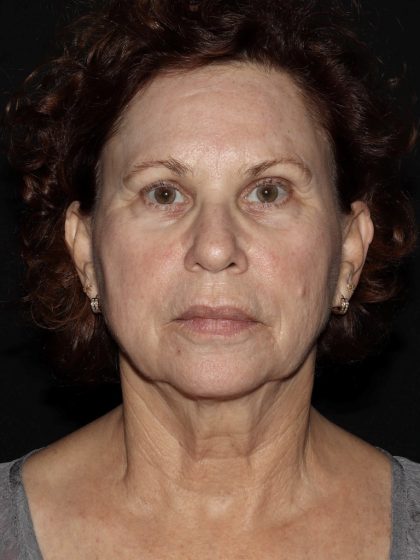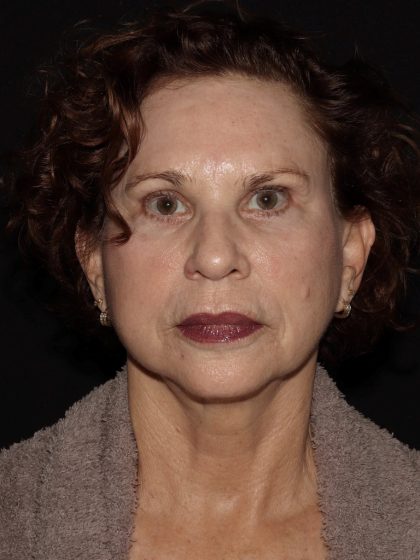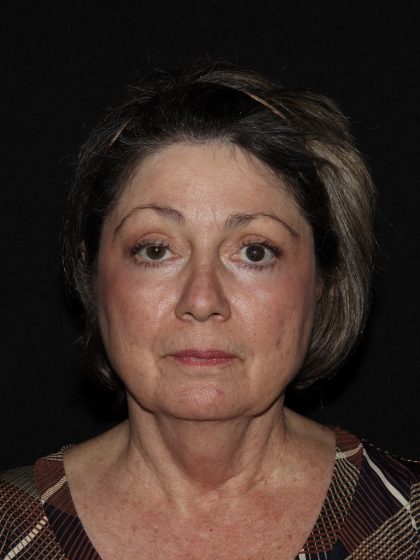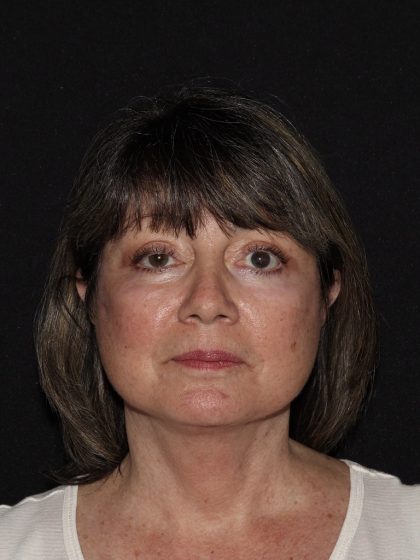Face & Neck Lift
Conveniently located to serve the areas of San Diego, CA

At Alexander Cosmetic Surgery in San Diego, facelift is our specialty. The procedure that keeps your face looking younger and vibrant, and we’ve refined our skills to achieve a more natural result. Your friends may not even be able to tell that you had facelift surgery!
At Alexander Cosmetic Surgery in San Diego, facelift procedures are our specialty. Our resident surgeons Dr. John Alexander and Dr. Jordan Kaplan have refined their skills to provide meticulous attention to detail, quick healing times, and remarkably natural results. Your friends may not even be able to tell that you had facelift surgery! As leaders in facial rejuvenation, we have performed more facelifts than any other plastic surgeons in San Diego.
Before and After Photos
Everybody ages differently, and sometimes your neck can show age even before your face. Loose muscles and skin can cause the “turkey wattle” or “bands.” We provide neck lifts that can enhance the appearance of your neck, making the skin and muscles tighter. At Alexander Cosmetic Surgery, we often perform neck lifts in combination with our facelift procedures.
For more information, call (858) 455-7557 or contact us online. We look forward to helping you look your best.
Contents
- 1 Before and After Photos
- 2 About Facelifts
- 3 Benefits of Facelifts
- 4 Who is a Candidate for a Facelift?
- 5 Personal Consultation
- 6 Preparation
- 7 Facelift Procedure
- 8 Recovery
- 9 Results
- 10 Corresponding & Complementary Procedures
- 11 How Much Do Facelifts Cost in San Diego?
- 12 Important Terms to Know
- 13 FAQ
- 14 References
About Facelifts
Facelifts and other facial rejuvenation techniques have been around for over a hundred years. Over this period, procedures have become more advanced, offering more and more options to those who want to look younger and more vibrant as they age. If you are bothered by the signs of facial aging, a facelift may be right for you. Also known as rhytidectomy (rye-tid-ek-tuh-mee), a facelift is a surgical procedure that can address the visible signs of aging in the face and neck. We offer multiple different kinds of facelift at Alexander Cosmetic Surgery.
Deep-Plane Face & Neck Lift
A deep-plane face and neck lift is a specialized facelift technique that tightens and strengthens the face at a more fundamental level. It involves a surgeon making incisions to lift the skin and the SMAS (superficial muscular aponeurotic system), a layer of tissue in the face, as one. Underneath these lifted layers, they work on the deep plane of tissues and ligaments in the face to tighten and reinforce them. Along with removing excess fat and skin, this can provide a more natural-looking postoperative appearance. (1)
Deep Plane Mid-Facelift
The deep plane mid-facelift is a sophisticated cosmetic surgical procedure designed to rejuvenate and enhance the midface region (the under-eye and cheek area). This advanced procedure involves meticulous dissection of the deep plane, allowing for the repositioning of soft tissues in the midface area. By targeting the deeper layers of facial anatomy, surgeons can achieve remarkable results in the restoration of facial symmetry, providing natural-looking facial rejuvenation. The midface lift procedure focuses on enhancing contours, restoring volume, and lifting sagging tissues to create a harmonious balance in the facial features.
QuickLift™
A QuickLift™ can provide similar results to a facelift in less invasive ways. It involves a surgeon making discreet incisions around the hairline and ears to partially lift and remove extra skin. They then tighten the SMAS and finally close the incisions. Utilizing techniques similar to a deep-plane facelift with the moderate invasiveness of a mini-facelift ultimately provides results as impressive as a facelift. This makes the Quicklift™ procedure highly efficient.
Benefits of Facelifts
Facelifts offer many beautifying benefits. These include reducing the following signs of aging:
- Sagging in the cheek (midface)
- Deep creases below the lower eyelids (tear trough)
- Deep creases along the nose extending to the corner of the mouth (nasolabial folds)
- Jowls (Displaced fat and weakened muscles around the jawline)
- Loose skin and excess fatty deposits under the chin and jaw that can make even a person of normal weight appear to have a double chin
Who is a Candidate for a Facelift?

There is no perfect age and no ideal window of opportunity to have a facelift. Some patients prefer to address problems early to maintain a younger look, while others prefer to wait until aging is more noticeable to get more out of the procedure. Patients who find themselves looking in the mirror and pulling up their face to see a younger version of themselves are probably ready for the procedure.
A facelift may be a good option for you if:
- You are physically healthy
- You don’t smoke
- You have a positive outlook and realistic expectations in mind for the improvement of your appearance
- Feel like you look much older than you feel
- Have significant looseness in the jawline and neck
- Have deep lines around the corners of the mouth
Because every case is unique, the only way to accurately determine which procedure is best for you is to consult with Dr. Alexander and Dr. Kaplan.
Personal Consultation
To ensure the most natural-looking results, we aim to recommend the procedure that most appropriately matches your needs. At your consultation, we will go in-depth to determine the right procedure for you and make sure that you have realistic expectations.
Many patients comment that they look older than they feel, but are wary of cosmetic surgery, especially if they’ve seen poor outcomes in others. We often hear, “I don’t want to look funny, weird, or pulled.” To avoid this outcome, we will go through a series of examinations and observations that are pertinent to your specific situation and goals.
The success of your facelift depends very much on your complete candidness during your consultation. We will ask you questions about your health, desires, and lifestyle.
Be prepared to discuss:
- Why you want the surgery, your expectations, and desired outcome
- The options available to you for a facelift and facial rejuvenation
- Medical conditions, drug allergies, and medical treatments
- Use of current medications, vitamins, herbal supplements, alcohol, tobacco, and drugs
- Previous surgeries
We may also:
- Examine and measure your face.
- Take digital photographs for computer imaging
- Discuss your options and recommend a course of treatment
- Discuss likely outcomes of a facelift and any risks or potential complications
- Discuss the anesthesia options available to you
Questions to Ask
- Am I a good candidate for this procedure?
- What will be expected of me to get the best results?
- Where and how will you perform my procedure?
- How long of a recovery period can I expect, and what kind of help will I need during my recovery?
- What are my options if I am dissatisfied with the outcome of my facelift?
To schedule your consultation, call (858) 455-7557 or fill out this form.
Preparation
Before surgery, we will have you:
- Take certain medications or adjust your current medications
- Avoid taking aspirin, anti-inflammatory drugs, and herbal supplements as they can increase bleeding
- Stop smoking well in advance of surgery
During a preoperative appointment, usually 1-2 weeks before surgery, we will:
- Get lab testing or a medical evaluation
- Tell you what to do on the night before and morning of surgery
- Discuss the use of anesthesia during your procedure
- Explain post-operative care and follow-up as well as what help you will need after the procedure
Preparing for your facelift procedure is an essential step in achieving your beauty goals. Following these instructions closely will help to ensure that your procedure goes smoothly.
Facelift Procedure
On the day of your procedure, we will administer medication for your comfort. You can receive intravenous sedation or general anesthesia. We will recommend the best choice for you.
Facelifts typically take about three hours to perform, depending on several surgical and patient-related variables. There are four basic steps to any type of Facelift.
Step 1: Incisions
A traditional facelift incision begins in the hairline at the temples, continues in front of the ear and around the back of the ear, and ends in the hair of the scalp. It is impossible to remove the extra skin without an incision. The more skin that needs to be removed, the longer the length of the incision. Incisions typically heal extremely well and are practically unnoticeable. Typically, we make a small incision under the chin to remove fat and tighten loose muscle bands.
Step 2: Undermining, or loosening the skin
Next, the surgeon gently loosens the skin from the underlying muscle (SMAS). The degree of loosening depends on the severity of aging on the face and the amount of excess skin. More loosening is required for excessive skin. For additional aesthetic improvement, your surgeon may sculpt fat away from the neck and jowls. They may also transfer the fat to the cheeks or tear troughs for added volume.
Step 3: Tightening the Muscle (SMAS)
The muscle layer can be tightened in several ways, including:
- Plication: folding, or pleating the muscle layer with sutures to suspend the layers of muscle (2)
- Purse string plication: tightening the muscle layer with suture loops
- Undermining: lifting the muscle layer as a second layer, then removing the excess and closing it with sutures.
Some surgeons skip this step, rendering the procedure a “simple facelift” or “skin-only” facelift.
Step 4: Closing the Incisions
This is the final step of the procedure, where the skin is re-draped over the uplifted contours, excess skin is trimmed away, and the incisions are meticulously closed with removable sutures. We use removable sutures to improve the healing process and minimize scarring. You will need someone to drive you to and from surgery and to stay with you for at least the first night following surgery.
Recovery
Recovery times vary from patient to patient. In general, the “bigger” the procedure, the longer the recovery time. However, within each group of patients, there are individual differences.
Compared to a QuickLift™, a traditional facelift recovery takes about twice as long, an average of eight to twenty days. Some individuals may heal more quickly, while others may take longer to fully recover. A patient who tends to have more bruising and swelling than normal will take longer to heal.
After a facelift, you should rest for about two weeks before returning to work and resuming everyday activities. Wait about three to four weeks before exercising or participating in strenuous activity.
Recovery Specifics
Following our instructions regarding medications and other postoperative measures is the key to a quick recovery. Herbal medications are available to reduce swelling and bruising, as well as speed up the healing process.
It is important that you do not subject your surgical incisions to excessive force, abrasion, or motion during the time of healing. Avoid wearing clothing that you have to pull over your head to wear.
You will be given specific instructions that will include:
- How to care for the surgical site
- Medications to apply or take orally to aid healing and reduce the potential for infection
- Specific concerns to look for at the surgical site or in your overall health
- When to return to the office
Results
Facelifts cannot stop the aging process, but they can “turn back the clock” on your appearance. Once your face heals, it will continue to age at a normal pace. If you look ten years younger after a facelift, it will take about ten years or more for your face to return to its preoperative condition.
It is natural to feel excited about seeing the “new” you, but you will need to be patient as your face heals from the surgery.
The visible improvements of a facelift will gradually appear as swelling and bruising subside. It may take several months for swelling to fully dissipate and up to six months for incision lines to mature. Once healed, the incision lines from a facelift are well concealed within the hairline and in the natural contours of the face and ear. Your final result will not only restore a more youthful and rested appearance but should also help you feel more confident about yourself.
Corresponding & Complementary Procedures
Facelifts can only be performed surgically; non-surgical rejuvenation treatments, such as peels or fillers, are unable to achieve the same results. However, they may help postpone the time at which a facelift becomes appropriate. Thread lifts, also known as feather lifts and contour lifts, have proven to be very ineffective because no skin is removed. These procedures have not stood the test of time and have essentially been abandoned.
Procedures often performed in conjunction with a facelift to further rejuvenate the face are brow lifts, to correct a sagging or deeply furrowed brow, an eyelid lift to rejuvenate aging eyes, and chemical or laser peels to smooth sun-damaged skin.
Other procedures can further enhance the outcome of a facelift. They include:
- Facial implants
- Soft tissue augmentation to re-contour the facial structure
- Wrinkle reduction through injection
- Shortening of the upper lip
How Much Do Facelifts Cost in San Diego?
Cost is always an important consideration for elective surgery. However, when choosing a plastic surgeon for a facelift, remember that the surgeon’s experience and your comfort are just as important as the final cost. We can provide you with an accurate cost estimate at your consultation with Dr. Alexander and Dr. Kaplan. We offer patient financing plans, so be sure to ask about those if you are interested.
The cost of your facelift may include:
- Surgeon’s fee
- Operating room and supplies
- Prescriptions for medication
- Medical tests
- Anesthesia fees
Our partner in payment plans is CareCredit. To learn more about how much facelifts cost at Alexander Cosmetic Surgery, call (858) 455-7557 or visit our contact page.
Important Terms to Know
- Anesthesia—General: The patient is asleep, requiring that the airway be protected either by a standard breathing tube or by a laryngeal mask (LMA), an inflatable mask that is placed in the back of the throat but not down the trachea. An anesthesiologist releases gas through the airway which puts the patient asleep. Drugs may also be given through the IV.
- Anesthesia—Local: The surgical area is numbed up with an injection, but the patient is awake. Sometimes a patient will be given an oral medication, like Valium, to help with relaxation.
- Anesthesia— Sedation (Twilight): The patient is made sleepy with medications given through an IV. The level of sedation can be adjusted, from barely sleepy to very sleepy. Sometimes sedation is given by the surgeon, but most of the time it is administered by an M.D. Anesthesiologist.
- Hematoma: An unwanted collection of blood under the skin.
- Hypertrophic Scar: A hyperactive, though usually temporary, scarring process that causes a scar to be raised and red; sometimes called a “baby keloid.” More common on the chest, trunk, and shoulders. Very uncommon on the face and neck.
- Jowls: Soft bulges that sag along the jawline, usually caused by loss of muscle tone in the lower face.
- Mesolabial Fold (Marionette Lines): The crease that extends from the corner of the mouth down the side of the chin.
- Nasolabial Fold: The crease that extends from the side of the nose to the corner of the mouth.
- SMAS: The Superficial Muscular Aponeurotic System, the superficial layer of muscles in the face just below the skin and subcutaneous fat.
- Tear Trough: A groove below the lower eyelids extending from the nose across the upper cheek.
FAQ
How long do facelifts take to complete?
Facelifts typically take about three hours to complete. There are many different types and variations of the facelift procedure, so this time can vary. Most surgeons can perform facelifts as outpatient procedures, which means you can go home the same day as your procedure.
How old do you have to be to receive a facelift?
You can receive a facelift at any age, as they can both alleviate and prevent the signs of aging on the face. The average of our facelift patients is between 50 and 60 years old.
Can you receive multiple facelifts?
Yes, you can receive multiple facelifts throughout your lifetime. Patients receive additional facelift procedures to correct the results of past surgeries or to maintain their results as time passes.
References
- Raggio BS, Patel BC. Deep Plane Facelift. PubMed. Published 2021. https://www.ncbi.nlm.nih.gov/books/NBK545277/
- Joshi K, Hohman MH, Seiger E. SMAS Plication Facelift. PubMed. Published 2022. https://www.ncbi.nlm.nih.gov/books/NBK531458/

